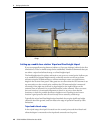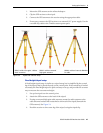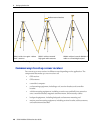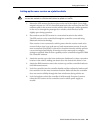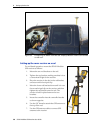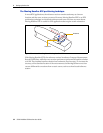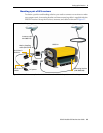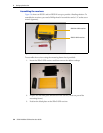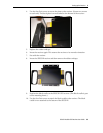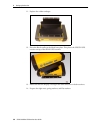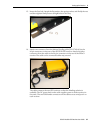
SPSx51 Modular GPS Receivers User Guide 51
Setting up the Receiver 5
Setting up a rover receiver on a belt or in a backpack
If you prefer to work free of the weight of the receiver on a pole, you can mount the
rover receiver on a belt (SPSx51 only) or carry it in/on a backpack (all receivers). When
you wear the receiver on a belt, ensure that the display is always visible so that you can
easily check the status of the receiver. If you carry the receiver in a backpack, use an
external radio antenna mount to allow for optimal radio signal reception. If you use a
low-gain antenna mounted directly on the receiver in a backpack, it may affect the
radio signal reception and reduce the likelihood of obtaining an RTK Fixed solution.
Setting up a pair of GPS receivers to provide heading
The SPS551H receiver is permanently in Heading mode and, when combined with a
suitable Trimble receiver, provides GPS heading. Other SPSx51 GPS receivers can also
be paired for heading output if they can operate in Heading mode (see Configuring the
receiver pair, page 58).
The SPS551H is a dual-frequency GPS receiver with a dual-frequency antenna, but it
does not operate as a stand-alone DGPS receiver. To compute a true north heading and
to be capable of positioning, the receiver requires an output message from another
SPSx51 receiver. To determine the precise vector between two moving objects, pair the
SPS551H Heading add-on with any one of the following receivers:
• SPS551
• SPS751 Max
• SPS851
Connect the antenna on the SPS551H to the other receiver to determine the precise
GPS heading between the two antennas. The SPS551H GPS receiver show the heading
on the two-line display, and outputs the heading data in NMEA or binary format.
B
Tip – To create a single, compact GPS position and heading unit, use the mounting frame
provided to stack the SPS551H
GPS receiver on top of the other GPS receiver. See below.
Use the Marine Heading Cable (P/N 57169-10) provided.






